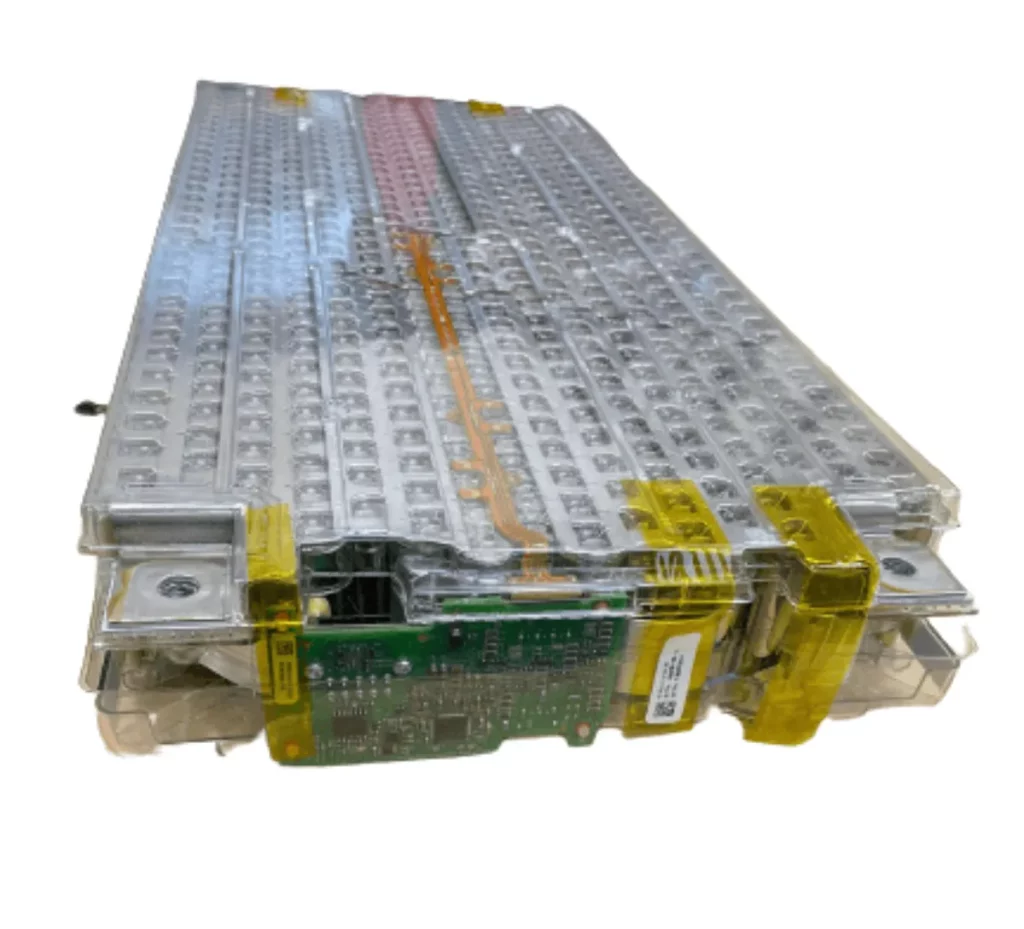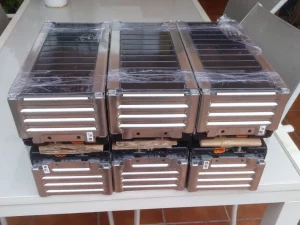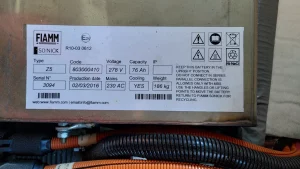The TESLA model S battery is always the first choice in conversions for many reasons: Excellent energy density, good availability and integrated liquid cooling system.
Furthermore, pretty easy BMS options (recommended BMS system: SimpBMS, see documentation here ) do exist for the Tesla modules. Here’s how simple the SimpBMS looks like:

The main disadvantage of the Tesla module is its packaging. It needs a watertight outer battery box, and needs to be mounted on rails.
One Module measures 690 x 315 x 80 mm. So if you have a quick look at the battery box measurements (800 x 520 x 280 mm), you will see that if we would pack the modules in a horizontal way, we would only have space for 3 modules (280/80), but if we would be able to mount them in a vertical way on the long side, we could theoretically fit 6 of them (520/80). But as you can easily see, this is not possible in practice, as we would have 35mm missing in height.

Although there would probably be a solution to that by modifying the battery box itself in height, we would face another problem: The nominal voltage of a Tesla moudle is 22.8 V. Putting 6 of them in series means that we can add the voltages of the 6 modules, so 6×22.8V=136.8V. So we only are at half of the target voltage of 270V, which of course isn’t any good. Some people went ahead to modify the Tesla modules with some surgery on the internal configuration of the pack (making it 12s instead of 6s) to double the voltage in order to meet the target voltage (would be perfect in my example), but this isn’t something for the faint-hearted, and there are some other implications such as different currents and some other risks. I wouldn’t recommend doing it, and I only know very few projects in automotive settings that effectively went ahead with 12s Tesla modules.
One Tesla module has a capacity of 5.3 kWh, so 6 modules would be 31.8 kWh. If we calculate the energy density in our specific battery box in the Renault Twingo, we get 31.8/116=0.274 kWh/Litre. So let’s keep this in mind when comparing it with other battery systems!
So unfortunately we have to rule out the normal Tesla module at this point – let’s look at other options!


